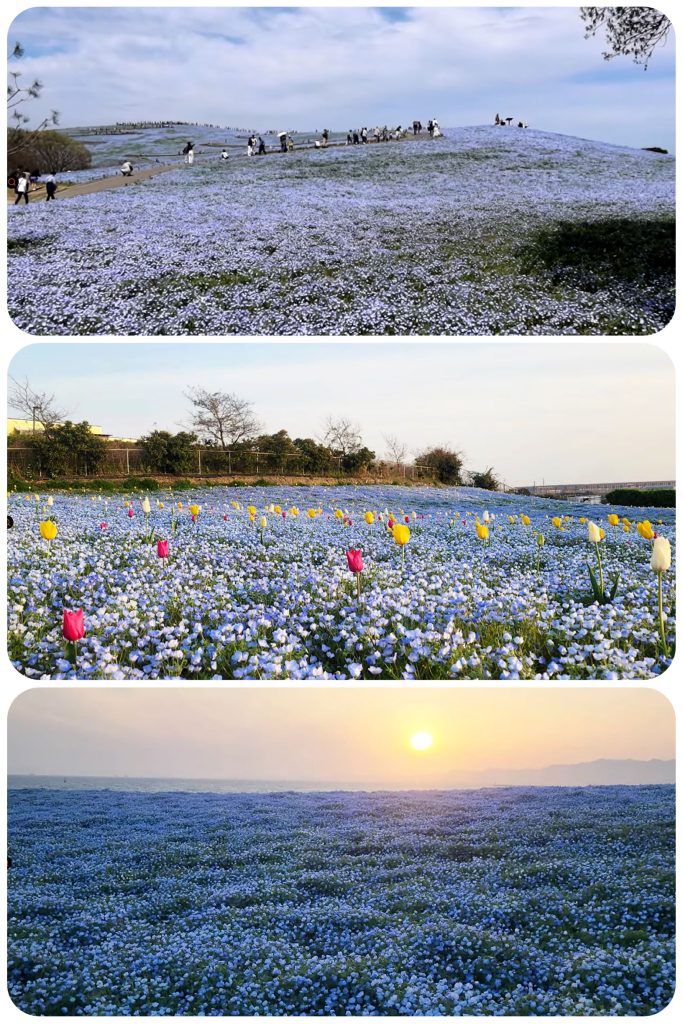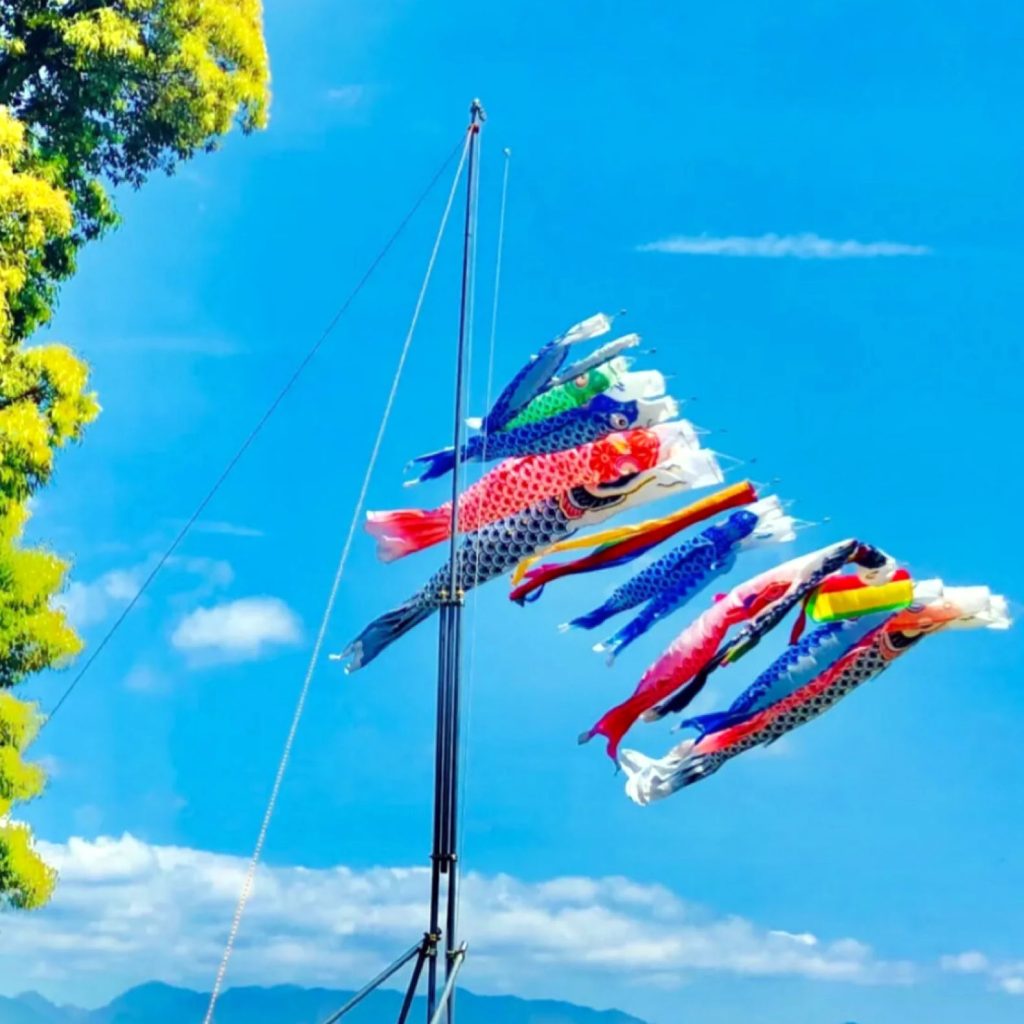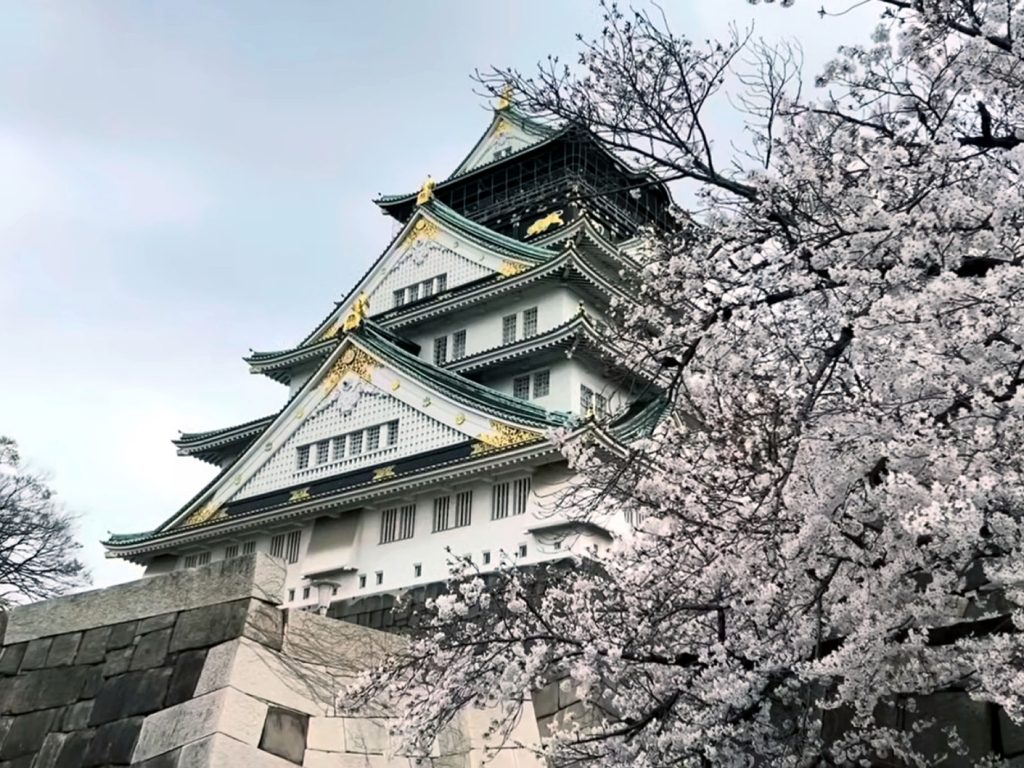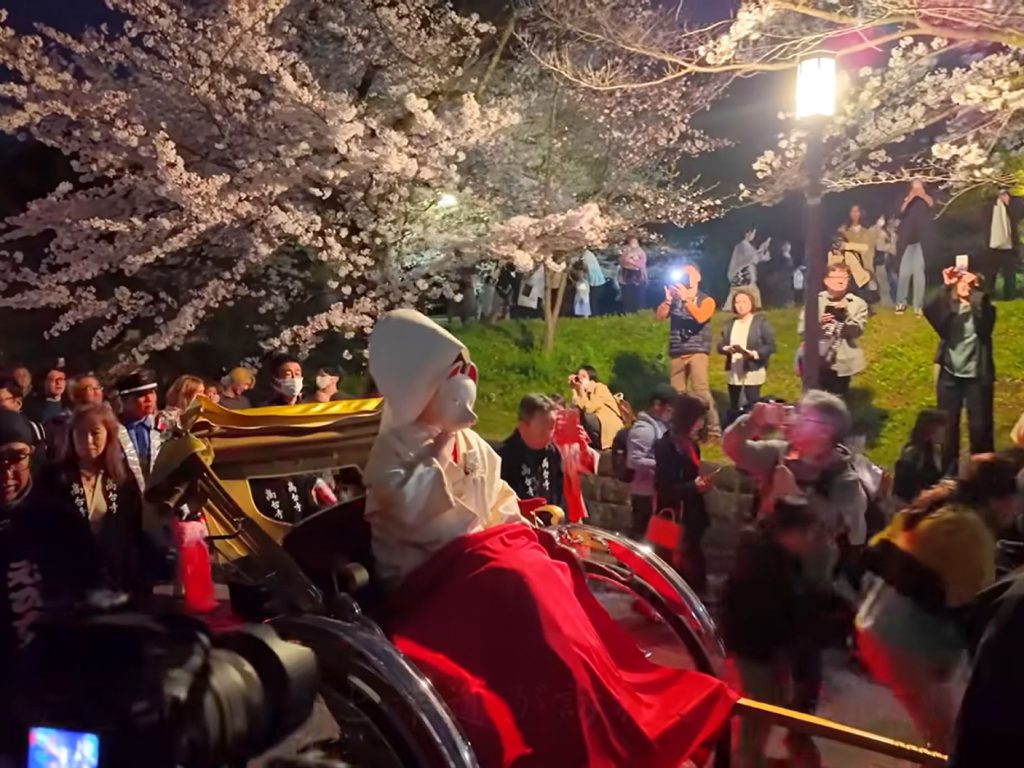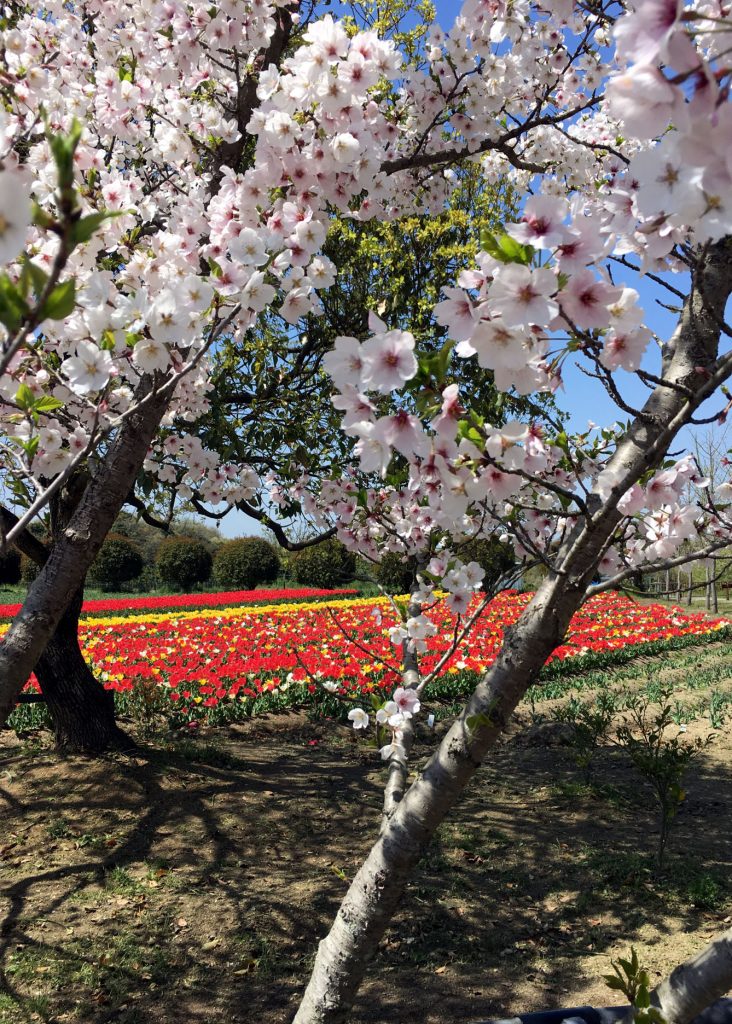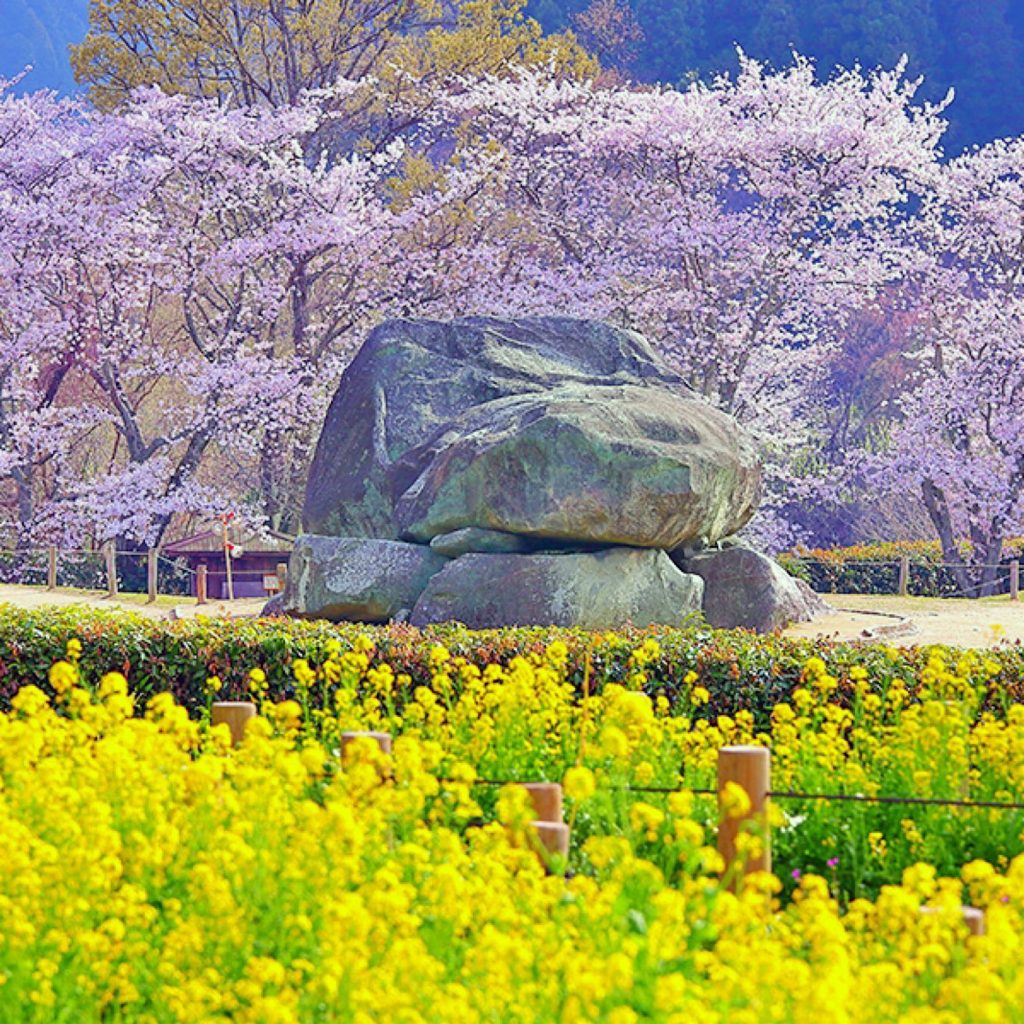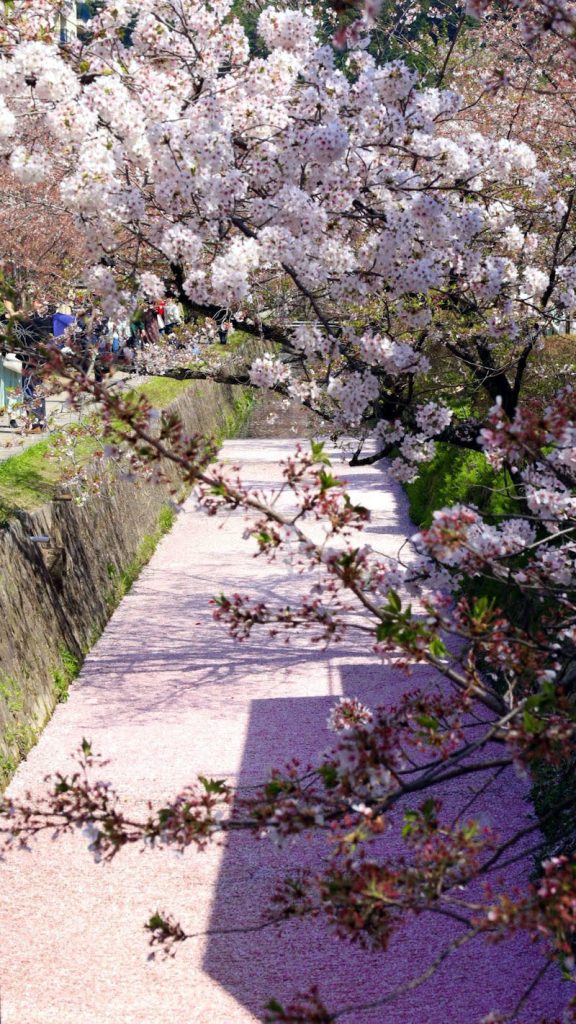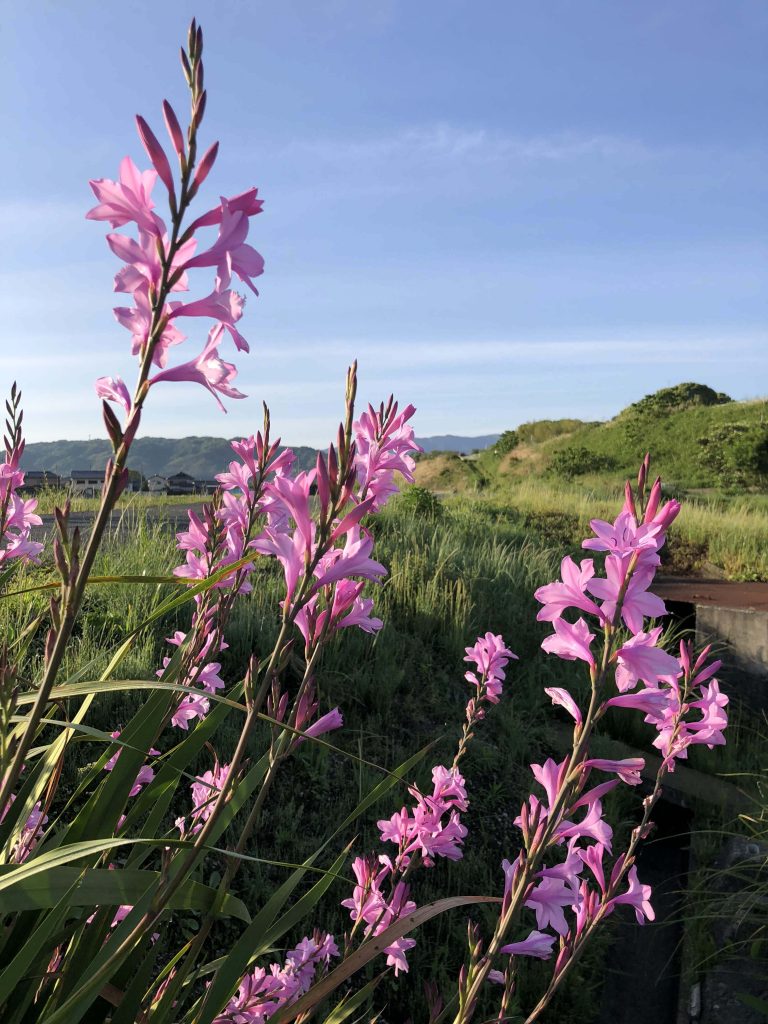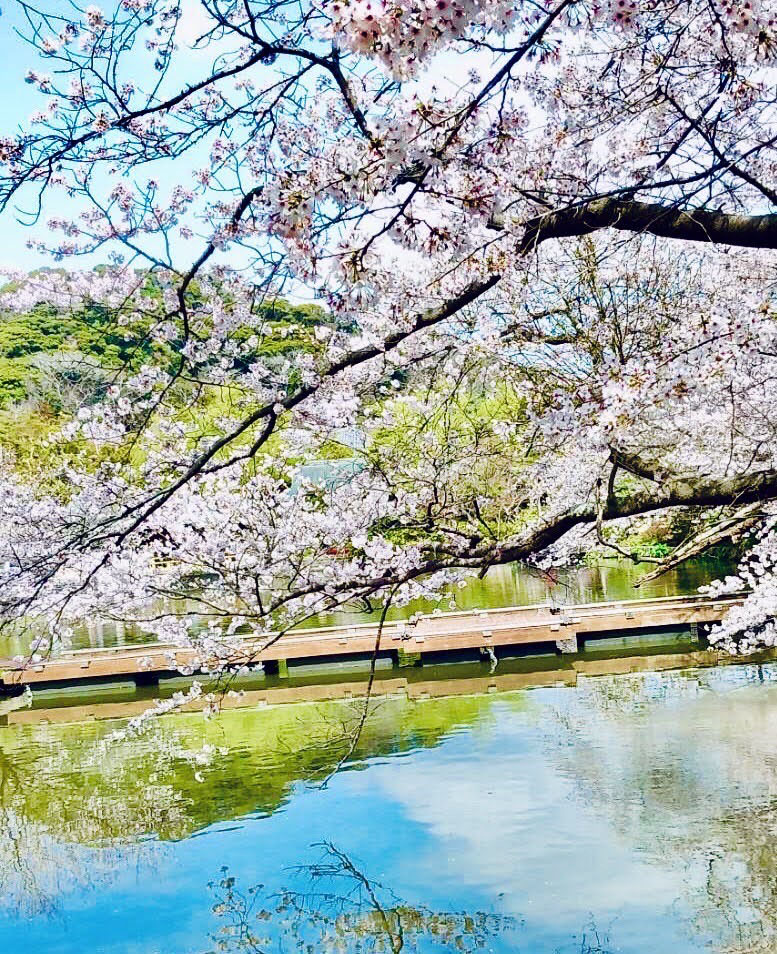
It’s a sight I’ve never seen before. I don’t know whether the water basin came first or the flower arrangement called ‘hanachozu,’ but this way of arranging flowers has become a recent trend. ‘Hanachozu’ refers to the practice of arranging flowers in the basin used for rinsing one’s mouth and purifying oneself in front of gods or Buddhas, called a ‘chozubachi.’ Recently, the practice of arranging flowers in chozubachi, the so-called ‘hanachozu,’ has spread rapidly. The reason seems to be that many shrines and temples prohibited the use of chozubachi for infection prevention during the COVID-19 pandemic, but finding it dull, they attempted to float flowers instead, which became popular nationwide. Water basins are typically homemade, using wooden or ceramic trays to arrange flowers. Unlike fresh flowers, the characteristic is floating only the flowers in water. However, I’ve never seen water basins floated in a river like in the photo. Perhaps it was inspired by the tradition of releasing spirits on Obon or the idea of flower rafts. While flower rafts and spirit releases are facing prohibitions or regulations due to concerns about polluting rivers, floating water basins may not be favored either.
初めて見る光景です。水盆が先か、花手水(はなちょうず)が先か知りませんが、こうした花の盛り方は最近の流行りです。花手水とは、手水鉢(ちょうずばち)と呼ばれる神前・仏前で口をすすぎ、身を清めるための器に花を生けることです。ここ最近、手水鉢に花を生ける、所謂「花手水」が急速に広まってきました。理由はコロナ感染予防のために手水鉢を使用禁止にする神社やお寺が多かったですが、それでは味気ないと言うことで、では花を浮かべてみようという試みが当たり、全国的に広まった理由のようです。水盆はどちらかといえばホームメイドで、木や陶器の盆に花を盛る事です。生花と違って花だけを水に浮かべるのが特徴です。しかし、写真の様に、水盆を川に流すのは見たことがありません。お盆の精霊流しか花筏から発想したのかもしれません。花筏はまだしも、精霊流しも川を汚染すると言うことで禁止または規制する動きの中で、水盆流しもあまり好ましくはありませんね。

